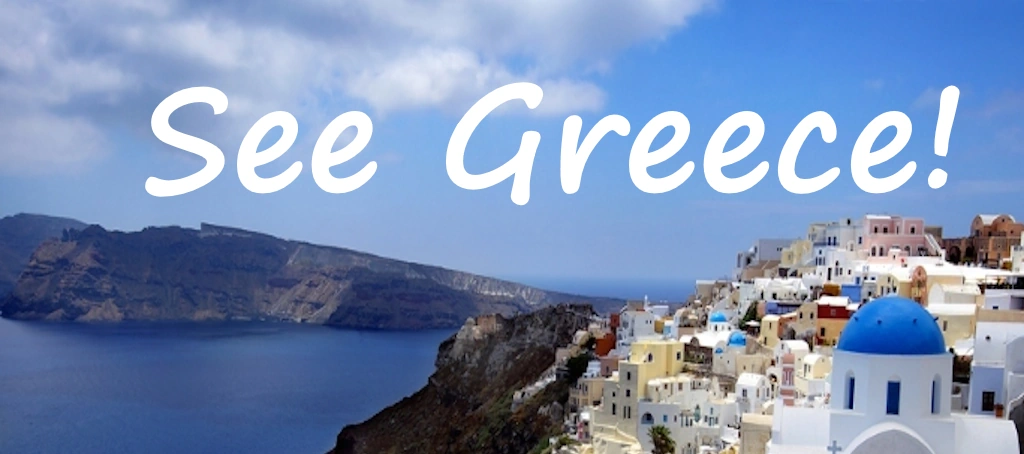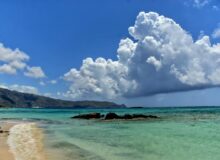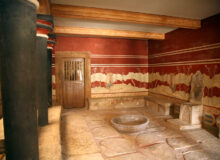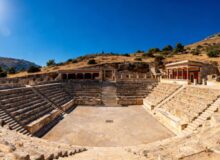The See Greece guide to Alonissos in the Sporades with a brief history and travel information on how to get there by ferry or by air and what to see and do.

Introduction
Nestled in the heart of the Northern Sporades, Alonissos is a tranquil Greek island known for its unspoiled beauty, crystal-clear waters, and rich marine life. Unlike its more famous neighbors, Skiathos and Skopelos, Alonissos offers a peaceful retreat for nature lovers, hikers, and those seeking an authentic Greek island experience.
Where is Alonissos?

Alonissos is part of the Sporades archipelago in the Aegean Sea, northeast of Evia (Euboea) and southeast of Thessaloniki. The island is situated between Skiathos (to the west) and Skopelos (to the south), with the Pelion Peninsula of mainland Greece to the northwest.
Alonissos is the farthest island in the Sporades and is surrounded by smaller islets, many of which are part of the National Marine Park of Alonissos and Northern Sporades—the largest marine protected area in Europe.
A Brief History of Alonissos
Ancient Times & Early Settlements
Alonissos has been inhabited since prehistoric times, with evidence of settlements dating back to the Paleolithic era. The island was known as “Ikos” in ancient times and was mentioned by Homer in the Iliad as part of the territory of the legendary warrior Achilles.
During the Classical and Hellenistic periods, Ikos was a prosperous island with strong trade connections. However, it suffered from pirate raids, a common threat in the Aegean.
Medieval & Ottoman Rule
In the Byzantine era, the island was renamed “Liadromia” and later “Alonissos” (possibly derived from the Greek word alon, meaning “salt,” due to its salt production).
Like much of Greece, Alonissos fell under Ottoman rule in the 15th century. The islanders resisted occupation, and many fled to nearby Skopelos and Skiathos.
The 20th Century & Modern Alonissos
Alonissos was severely damaged by an earthquake in 1965, which led to the abandonment of the old capital, Chora (Old Alonissos). Residents moved to Patitiri, the current port town.
In the 1980s, the island saw a revival as foreigners and Greeks began restoring old houses, turning it into an eco-tourism destination. Today, Alonissos is known for its natural beauty, sustainable tourism, and marine conservation efforts.

What to See & Do in Alonissos
1. Explore Chora (Old Alonissos)
Perched on a hilltop, Chora is the island’s original capital, with cobbled streets, traditional houses, and stunning sea views. Though partially abandoned after the 1965 earthquake, many buildings have been restored, and it’s now a charming area with tavernas, cafes, and boutique shops.
– Visit the Folklore Museum – Learn about the island’s history and traditions.
– Stroll to the Venetian Castle – Offers panoramic views of the Aegean.
2. Discover Patitiri (The Port Town)
Patitiri is the main harbor and administrative center of Alonissos. Named after the old grape presses (patitiria) found here, it’s a lively spot with:
– Seaside tavernas serving fresh seafood
– Boat rental agencies for island-hopping
– The Alonissos Museum (showcasing local history)
3. Relax at Alonissos’ Best Beaches
Unlike crowded tourist islands, Alonissos has pristine, secluded beaches with turquoise waters:
– Leftos Gialos – A sandy beach with shallow waters, ideal for families.
– Agios Dimitrios – A pebbly beach with crystal-clear water, accessible by boat or a steep path.
– Milia Beach – One of the island’s longest beaches, with golden sand and a relaxed vibe.
– Chrisi Milia (Golden Beach) – A stunning golden-sand beach with calm waters.
4. Visit the National Marine Park of Alonissos
This protected marine area is home to:
– The Mediterranean monk seal (one of the world’s rarest seals)
– Dolphins, sea turtles, and rare seabirds
– Underwater caves and shipwrecks (great for diving)
Boat tours from Patitiri take visitors to remote islets like Peristera, Kyra Panagia, and Gioura.
5. Hike the Island’s Scenic Trails
Alonissos has well-marked hiking trails through pine forests and olive groves. Popular routes include:
– Patitiri to Chora (about 45 minutes)
– Steni Vala to Agios Petros (a coastal path with sea views)
6. Taste Local Cuisine & Wine
Alonissos is known for its organic farming and traditional dishes:
– Fresh seafood (octopus, lobster, grilled fish)
– Homemade cheese pies (tiropites)
– Local wine (the island has its own vineyards)
Best tavernas:
– To Kamaki (Patitiri) – Famous for lobster spaghetti.
– Ouzeri Sto Gialo (Patitiri) – Great for meze and ouzo.
How to Get to Alonissos
By Air
Alonissos does not have an airport. The closest airports are:
1. Skiathos International Airport (JSI) – The most convenient option, with seasonal flights from Europe. From Skiathos, take a ferry (1-2 hours) to Alonissos.
2. Thessaloniki Airport (SKG) – A larger international airport, but requires a 4-hour drive to Volos or Agios Konstantinos + a ferry.
By Ferry
Ferries to Alonissos depart from:
– Volos (Mainland Greece) – 3.5 to 5 hours (operated by Hellenic Seaways and ANES Ferries)
– Agios Konstantinos (near Athens) – 4 to 5.5 hours
– Skiathos & Skopelos – 1 to 2 hours (frequent summer connections)
Tip: Book ferry tickets in advance during peak season (July-August).

Final Tips for Visiting Alonissos
– Best time to visit: May-June & September-October (fewer crowds, pleasant weather).
– Car rentals: Recommended for exploring remote beaches.
– Eco-friendly: Respect the marine park’s conservation rules.





















